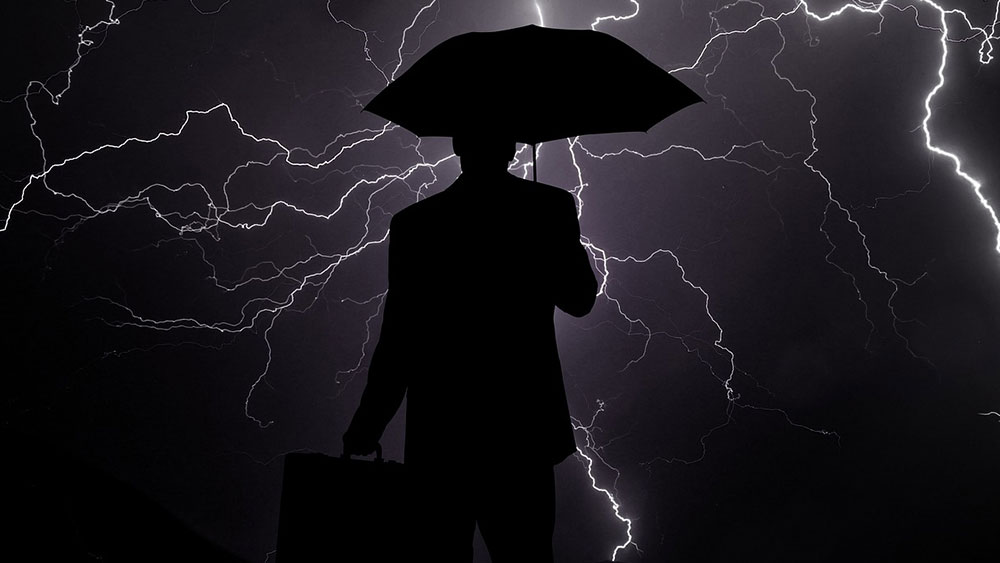Source: Pixabay.com | Photographer: Geralt
Record-low interest rates in the past decade. Surging debts on a global scale. Escalating trade tensions between leading economic powers. Extremely volatile currencies.
These are all troublesome signals that immediately raise red flags in everyone’s minds about an impending financial crisis. And rightfully so since, if history has taught us anything, it’s that markets go through repeated economic cycles of expansion and contraction.
But while most of us can sense that an economic downturn is probably coming, trying to come up with an accurate prediction can quickly prove to be a significant challenge. So, what makes a market crash so notoriously difficult to predict despite having all visible signs of that happening?
Randomness in a math-driven system
To understand where the experts’ painstaking calculations typically hit a proverbial cul-de-sac in the days and hours leading to an economic recession, let’s first go over the symptoms that typically precede a stock market crash. The three main signs include:
– Bullish trends that dominate the market for an extended period of time
– Prices that are driven to unsustainable highs due to said bullish trends
– Excessive debt and leverage in response to the increasing price tags
Now here’s where things get a bit fuzzy. Perhaps the main reason why almost all prediction models fail to warn us on time is because they tend to favour raw, quantitative data, such as the three signs above. And the trouble with this approach is that, oftentimes, little attention is paid to measure the qualitative data that is actually responsible for driving the global economy.
We are talking, of course, about the human factor—the unpredictable element in this otherwise neatly organised mathematical system.
Do market crash predictions hold any truth?
In times of great economic uncertainty, it’s all but uncommon for investors and traders to crack under the enormous pressure and make irrational choices that lead to severe market volatility. What this essentially means is that crisis models that don’t account for the often erratic nature of human behaviour are inherently unable to paint a realistic picture of the markets.
However, this didn’t stop some analysts from trying to come up with a prediction that takes the randomness of human nature into account. One such brave analyst is Ray Dalio.
Ray Dalio’s attempt at solving the age-long riddle
In his latest book, entitled A Template For Understanding Debt Crises, the founder of the Bridgewater Associates hedge fund set out to identify select market patterns. To do so, he dove deep into the archives of past economic recessions. After performing an exhaustive comparative analysis Dalio found out that:
1. Prior to each market crash in the past, interest rates were kept low or stayed at 0.
2. Financial assets skyrocketed in price to the point where there was an almost palpable gap between the well-to-do and the impoverished members of society.
3. The economic relations between leading countries were highly strained, similar to the ongoing feud between present-day China and USA.
Dalio also found the current conditions to be strikingly similar to those preceding the 1937 recession, concluding that we might be looking at another crisis within the next two years.
What’s the main takeaway from all of this?
As well-researched as Dalio’s predictions may be, there is no guarantee that his forecasts (or anyone else’s predictions) will ring true a couple of years down the line.
The unfortunate reality is that almost all downturn predictions in the global markets’ recorded history have either turned out to be inaccurate at best, or completely misleading at worst. But if you can’t rely on well-researched market data published by highly respected financial experts and you know a market crash is coming, what else can you really do to prepare?
Two words—plan ahead! Unfortunately, only you can protect your funds when the markets go south. You need to have an emergency plan in place so that you are fully prepared for an economic downturn regardless if Wall Street crashes today, tomorrow, or in two years.
Coming up with such a plan would require you to carefully research businesses that are likely to enjoy a sustainable growth at a time when all other financial assets tumble. You would then have to invest in those industries that you follow closely and are most knowledgeable about.
To avoid costly mistakes, you would also need to be mindful of the trading risks you take at a time when indices are reaching record highs. But regardless of which strategy you decide to employ, always try to treat economic forecasts as guidance and not as financial advice.
***
Willing to give the markets a shot and trade responsibly? Benefit from 1000+ financial instruments and test the waters in a safe market environment with a free €10 000 demo account.
